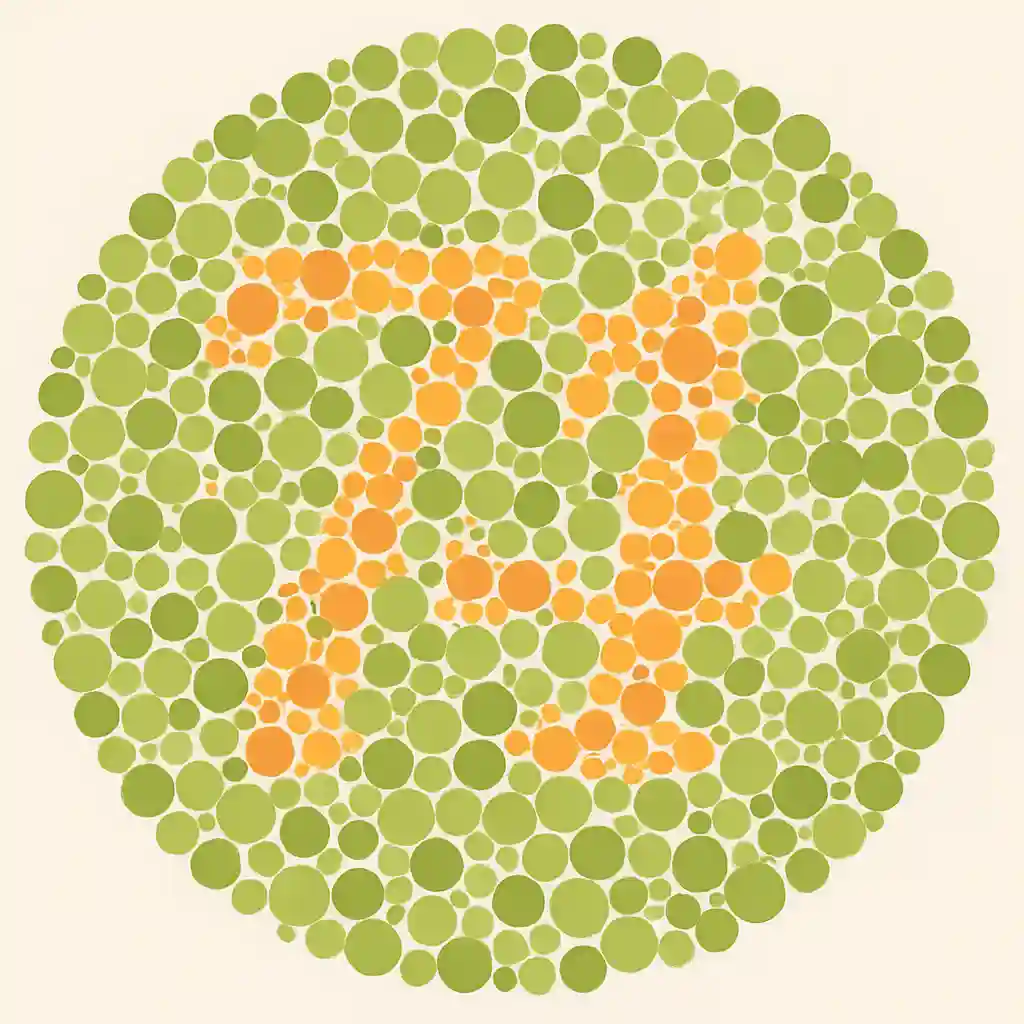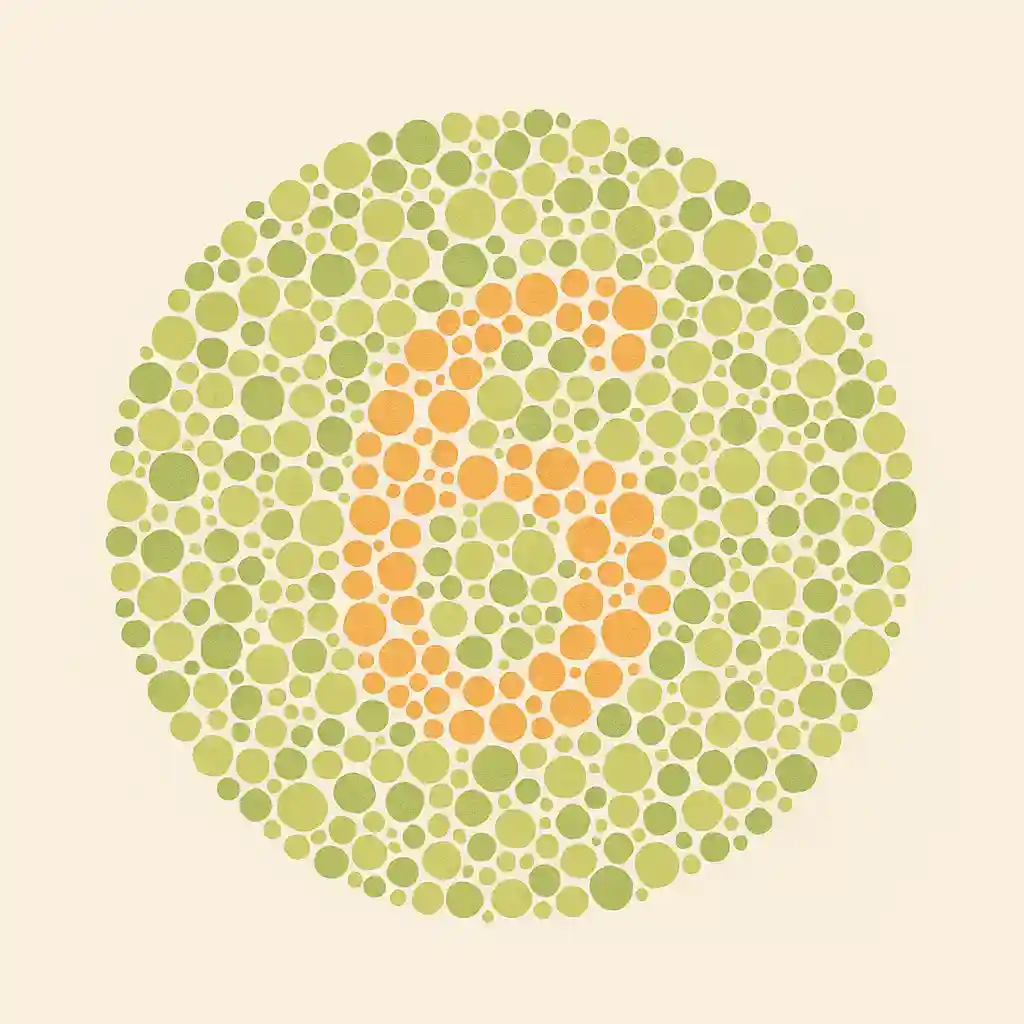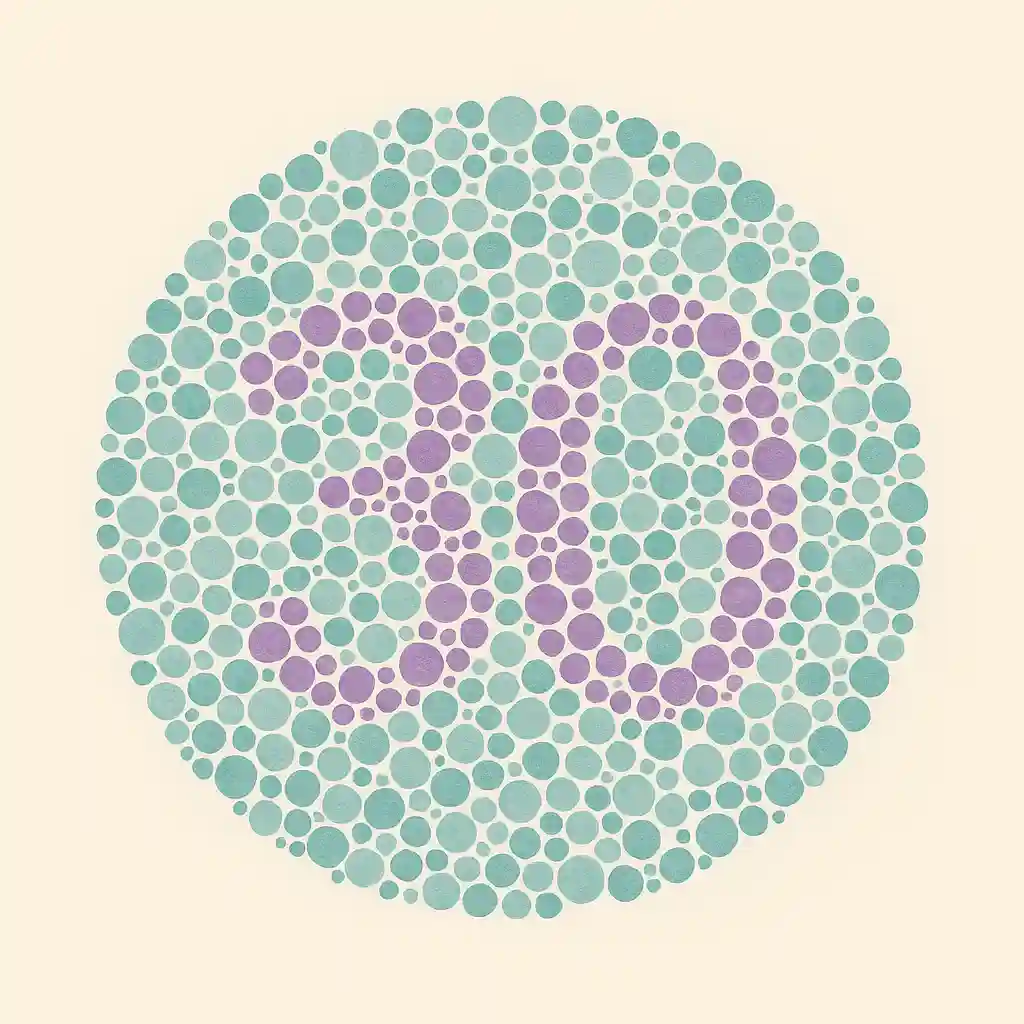Looking for real facts on color blindness? You’re not alone. This common vision condition affects how millions of people see everyday colors—yet many don’t even know they have it.
Whether inherited at birth or developed later in life, color blindness changes how we see and interact with the world. In this guide, you’ll discover 30 surprising facts on color blindness, plus take a quick quiz using real Ishihara test images to see how your own color vision compares.
This article includes 3 real color blind test images so you can check your vision as you read. Let’s dive into the facts.
You may also be interested in my recent articles:
👀 What Is Color Blindness?
Color blindness—also called color vision deficiency—means you can’t see certain colors correctly. Most people still see color, just not all shades. The most common types make it hard to tell the difference between red and green or blue and yellow.
✅ 30 Surprising Facts About Color Blind People
- Affects 1 in 12 men and 1 in 200 women
- Most cases are inherited from the mother
- Red-green color blindness is most common
- Blue-yellow blindness is rarer
- Total color blindness (grayscale vision) is very rare
- Can be caused by disease or injury later in life
- Most people still see some colors
- Mild cases often go unnoticed
- It’s about hue confusion, not darkness
- Some famous artists had color blindness
- Affects careers like pilot, electrician, or graphic designer
- Ishihara dot tests are most commonly used
- EnChroma glasses enhance color contrast (but don’t cure it)
- People learn to use position and memory (e.g. traffic lights)
- Kids often aren’t tested for color blindness
- Affects how you cook, dress, or shop
- Low contrast websites are hard to use
- Many apps now have color blind modes
- Inherited types don’t get worse with age
- People adapt well using memory or labels
- Some lenses filter light to boost contrast
- More common in Northern European men
- Paper money can be hard to read without color coding
- Some can see camouflage better than others
- People may struggle to name colors correctly
- Buying clothes can be confusing without help
- Color blind people still have favorite colors
- Tools like Color Blind Pal identify colors with a phone
- Accessible design helps everyone, not just the color blind
- Many animals—like dogs—are color blind too
👓 Color Vision Quiz: Can You See These Numbers?
🟢 Color Blind Test #1
What number do you see in the image below?

🔵 Color Blind Test #2
Can you spot the number in this test?

🟣 Color Blind Test #3
What number is hidden in the dots?

👵 Facts on Color Blindness in Adults Over 50
You can be born with color blindness, but you can also develop it later in life. This is more common after age 50, due to changes in eye health.
👁️ Common Causes After 50:
- Cataracts – Clouding of the lens makes colors look faded
- Glaucoma – Affects peripheral and color vision
- Macular degeneration – Impacts central vision and color sharpness
- Diabetes – Damages blood vessels in the eye
- Certain medications – Can affect how you see color
💡 Tips for Managing Color Blindness After 50
- Use high-contrast labels at home (for wires, food, medicine)
- Choose patterns over subtle colors in clothing
- Use apps like Color Blind Pal when shopping
- Turn on color blind modes in games and software
- Schedule annual eye exams to monitor vision health
❓ FAQ: Fact on Color Blindness and Aging Vision
🧓 Can you develop color blindness later in life?
Yes. While most color blindness is inherited, you can develop it later due to eye diseases like cataracts, glaucoma, or macular degeneration. Certain medications or health conditions, like diabetes, may also affect color perception as you age.
🧬 How does aging affect color vision?
As you age, the lens in your eye naturally yellows, which can dull colors—especially blues and purples. Conditions like cataracts and age-related macular degeneration can further reduce your ability to see colors clearly.
🧪 How to test for color blindness at home?
You can take online tests using real Ishihara plate images or download apps like Color Blind Pal or Color Identifier. These tools help screen for red-green and blue-yellow deficiencies from your phone or computer.
👁️ What is a color blind vision test with real images?
Real image tests use Ishihara plates—circular images filled with colored dots that form hidden numbers. These are the gold standard for detecting red-green color blindness and are often used in eye exams and online self-tests.
👨 Is color blindness more common in men?
Yes. About 1 in 12 men are color blind compared to only 1 in 200 women. This is because the most common form of color blindness is linked to the X chromosome, which men only inherit once.
👵 What should I know about color blindness after 50?
After age 50, color vision may shift due to changes in the eyes. Even if you weren’t born color blind, fading color sensitivity—especially to red, green, or blue hues—is common. Regular eye exams can help catch changes early.
🧾 Final Thoughts
Color blindness doesn’t stop you from living a full, confident life. Most people adapt easily with tools, tips, and good design. If you’re over 50 and noticing vision changes—or you struggled with the quizzes above—consider getting a full eye exam.

Rick Huey is a fitness writer who has dedicated his life to living an active lifestyle. With more than 30 years of experience in the fitness industry, Rick is a respected contributor for FitFab50.com, where he shares his wealth of knowledge with a wide audience. His dedication to promoting the benefits of living an active lifestyle has inspired many people to pursue their own fitness journeys with enthusiasm and dedication.
Last update on 2025-12-06 / Affiliate links / Images from Amazon Product Advertising API

